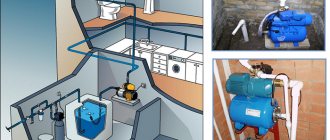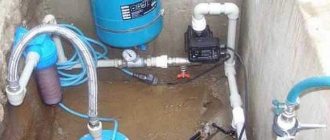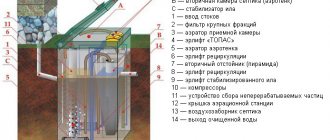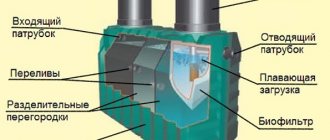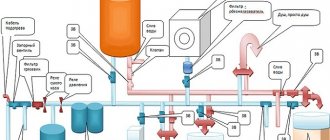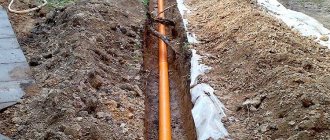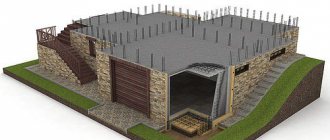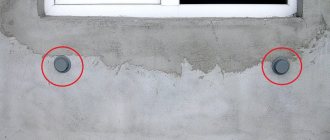Most new materials and finished structures introduced into the construction and finishing industry almost completely eliminate the free movement of air. The tightness they provided, along with the advantages, brought a significant disadvantage - a violation of ventilation processes.
They simply need to be restored, because, you see, without a regular supply of fresh air to the room it is impossible to live in it!
We know how to solve such a difficult problem: exhaust ventilation through the wall to the street will form the normal movement of air masses. A small wall device will ensure exhaust flow removal and excellent air exchange.
The article we propose will introduce you to the intricacies of choosing a valve for organizing exhaust ventilation, and the rules for its installation and operation. The information presented for consideration is confirmed by photographic materials, diagrams and video instructions.
Typical ventilation problems
Natural ventilation of residential premises is based on the presence of micro-slits, characteristic of wooden window structures. Through such small openings, air regularly entered from the outside and was removed from the house through ventilation ducts installed in the building structures.
Thus, there was a constant change of air masses in the apartment, promoting a normal level of humidity, removing unpleasant odors, etc.
Regular renewal of the air mass, which occurs naturally through the loose fit of window sashes and door panels, as well as through ventilation, creates an optimal microclimate for life, removes excess moisture, carbon dioxide and other harmful toxic substances
Improper air exchange in the house is an almost inevitable problem when taking measures to reduce heat loss. When installing new windows and doors, trying to minimize heat loss, few people think about ventilating their homes.
But soon problems manifest themselves in the form of a stuffy atmosphere, mold growth in the bathroom and other similar phenomena. Soon, the abnormal microclimate begins to negatively affect the health of those who live in such a house.
Ventilation supply units of various types and types help to deal with excessive sealing of rooms, but this may not be enough for normal ventilation.
The draft of natural exhaust ventilation is often weak, or even completely absent. Due to problems with the design of ventilation structures, some of the air masses that should be removed from the house penetrate back.
Lack of ventilation or its improper organization is dangerous not only for human life. Moisture condensing on surfaces that is not eliminated as a result of ventilation causes premature failure of structures, communications, and finishing.
The state of draft in the ventilation system of a house or apartment is also reflected by the air temperature outside, or rather, the difference in temperature inside and outside.
In winter, this gap is quite large, which provides good traction. But in the summer, the difference in temperature between the external and internal air is not so significant, and this does not have a very good effect on the quality of traction.
For these reasons, you should consider installing special exhaust valves. They will ensure quick and effective removal of exhaust air from the home, and will also prevent its re-entry.
Stagnant, musty air and an excessively humid environment contribute to the spread of fungal colonies, threatening residents with serious diseases and destruction of building materials (+)
Types of exhaust valves
The low efficiency of exhaust ventilation is most often explained by various reasons, for example, a violation of the patency of the channels or their tightness.
In multi-storey buildings, such situations often arise due to flaws during repairs, and it is not always possible to eliminate the consequences of errors and restore the normal state of ventilation ducts.
Depending on the installation location of the exhaust ventilation, use a horizontal or vertical valve model and a fan with a sufficiently high performance (+)
In this case, exhaust valves may be more than appropriate. The design of these devices is very simple; their main purpose is to let air flow outward and prevent it from penetrating back. According to the type of installation, such valves are divided into horizontal and vertical, it all depends on the direction of air flow.
If the exhaust flow must move vertically, choose a valve with horizontal installation. And to remove air horizontally, a vertical valve is needed. Typically, exhaust valve models are equipped with a fan. They are used where air must be removed from the room forcibly.
Another significant point is the noise level that the operating device produces. The lower the sound effects from the valve blades opening and/or the fan spinning, the better. Much useful information can be found in the product data sheet.
When choosing an exhaust valve that will be installed in the wall, you should take into account the thickness of this wall, as well as the material in which the hole will have to be made
Informed choice of the appropriate option
Most often, wall ventilation exhaust valves are made of metal or durable plastic. Plastic products are not suitable for conditions of high temperature and humidity, for example, for a bath, but they have proven themselves excellent in less difficult situations.
When selecting a valve, you should take into account its cross-section: rectangular or round.
The most important indicator is the air flow speed for which the device is designed. The most common are models designed for a flow of 4-6 m/s.
To organize forced exhaust ventilation in an apartment or house, you can use a design consisting of a fan and a check valve
If the valve is selected for a natural ventilation system, it is very important that the damper damper elements respond sensitively to even small air flows. But for systems with low draft, the presence of an exhaust fan is mandatory, so such sensitivity is not needed.
But here it is important to choose a fan that is suitable in power depending on the volume of the room for which the device is selected. So, for a kitchen, the fan power is calculated using a multiplying factor of ten, and for a bathroom this figure can be seven units.
In multi-storey buildings, the exhaust ventilation pipe must be installed one meter above the roof so that unpleasant odors do not penetrate from the lower floors to the upper ones.
Advantages and disadvantages of outdoor hoods
Forced cleaning through the wall allows you to create an effective exchange of air masses, regardless of the state of natural draft. As a rule, organizing a system does not require much labor; the energy costs of such equipment are also minimal. Adjustable fans can be conveniently adjusted to any operating mode.
Among the disadvantages are the presence of a certain noise in operation, slightly perceptible drafts, and dependence on electricity.
Subtleties of constructing exhaust ventilation in the wall
In private houses and even in multi-storey buildings, in many cases it is more convenient to make a ventilation outlet directly through the wall. For this purpose, models of exhaust valves with a fan are used, which is inserted into the mounting coupling intended for their location.
You can also use overhead fan models that are mounted on the inside of the wall.
To install an exhaust ventilation valve in a wall, you first need to make a marking and drill a hole of the required size in it.
To install such a simple design, you will need to make a fairly large hole for installing ventilation in the outer wall of the house. But first you need to choose the right device.
Manually controlled models have an affordable price, but they are extremely inconvenient to use, since you have to constantly remember to turn the exhaust valve on or off.
The exhaust fan is installed on the inside of the hole made in the wall, and the check valve and protective grille are installed on the outside.
To automate the process, you can use a timer. You will need to select a time schedule; in accordance with these settings, the valve will turn on and off at the specified time. It may be more effective to use a sensor that responds to the level of humidity in the room.
In this case, the device will start working when the air in the room becomes too humid, and the fan will stop when the humidity drops. When choosing automatic control devices, you should make sure that when the power is turned off, the previously set settings are retained.
To ensure good air exchange in the room, it is necessary to use a sufficiently powerful fan. A unit that is weak in this regard simply cannot cope with the movement of a large volume of air masses, and as a result, ventilation will not be effective enough.
The choice of location for installing a wall ventilation valve is based on the requirements specified in the device manufacturer’s instructions
When making calculations, a simple formula is usually used:
M=O*B
Where:
- M – required fan power;
- О – volume of the room in which the device will be installed;
- B – increasing air exchange coefficient.
The volume of a room, as you know from a school mathematics course, can be calculated as the product of the area and height of the room. The air exchange coefficient is determined depending on the purpose of the room.
This indicator should be:
- for a separate toilet – 8;
- for the kitchen – 15;
- for a bathroom or combined toilet – 20.
All that remains is to determine the volume of the room and multiply it by the appropriate coefficient to obtain an indicator that will help you choose a valve with a sufficiently powerful fan. You should not take an overly powerful model, this will only cause unnecessary expenses and will not have a beneficial effect on the ventilation process.
When calculating the power of an exhaust fan, it is necessary to take into account the sensitivity of such equipment to system resistance. The presence of a decorative grille and valve can reduce the speed of air flow by three to five and even ten times. Therefore, you should not choose a device with minimal size and power.
The fan performance must be sufficient to ensure that exhaust air leaves through the valve from adjacent rooms, and not just from the room in which the device is installed. Before starting work on installing an exhaust valve with a fan, you must select a suitable location.
The hole for the exhaust valve is best made in the upper part of the outer wall, this position facilitates the effective removal of exhaust air
To do this, use a wall that is as far as possible from the place where fresh air is taken in. Typically, supply ventilation is installed in the walls or windows of rooms such as a bedroom or living room.
A kitchen or bathroom is more suitable for exhaust ventilation. As a result, unpleasant odors, excess water vapor, etc. are also removed with the exhaust air.
The hole for the exhaust valve must be made at the top of the wall. First they mark, then start drilling. A hole of suitable size is made with a drill and a feather annular drill. Sometimes you have to use a special tool with a diamond attachment.
The opening for the exhaust valve must be sized and configured to match the dimensions of the fan. This is usually a round device, but sometimes it is more convenient to use a device with a square body. In this case, the hole for the valve must be hollowed out using a hammer drill with a spatula-shaped attachment.
The diameter and shape of the hole in the wall for installing the exhaust valve must correspond to the characteristics of the fan that comes with the device
Such work is usually accompanied by a large amount of dust, from which even the use of an industrial vacuum cleaner cannot help. Before starting drilling, it is necessary to cover the surfaces with film or other suitable materials to protect them from contamination.
A core drilling machine can be used to drill through particularly thick exterior walls made of durable materials. This is expensive equipment that is cheaper to rent than to buy. Specialized companies provide core drilling services at a relatively low price, which depends on the drilling depth and wall material.
To drill through thick walls when installing a forced ventilation exhaust valve, you can rent a core drilling machine that can handle almost any material
During operation of such equipment, water cooling is used. At the same time, a device is used to collect waste material and water, but some of it will still end up on the wall; this point should be taken into account before starting work.
After the hole is prepared and cleaned of dust, it is necessary to insert a coupling into it; it is supplied complete with the valve.
Now you need to mark the mounting locations for the fan. The device is fixed to the wall through the holes provided for this purpose. Dowel-spacers are most often used as fasteners. Usually there is a small gap between the coupling and the wall, through which air can subsequently penetrate.
All such cracks are carefully filled with polyurethane foam, which will provide the structure with the necessary tightness. After this, you can begin installing the exhaust valve. You should act very carefully so as not to damage the valve itself during installation and to prevent construction debris from getting inside it.
After installation, you need to make sure that the valve flaps move freely and do not jam. After this, you need to install a decorative grille on the outside of the house wall, which will close the hole and give the structure an aesthetic appearance.
To improve the efficiency of the exhaust valve and reduce the likelihood of it freezing in winter, it is recommended to lay a layer of thermal insulation material around the coupling. This point must be taken into account when calculating the diameter of the hole for the exhaust valve.
Some craftsmen consider the coupling that comes with the exhaust valve to be not strong enough. They note that if installation is necessary, the coupling may be accidentally damaged, and recommend replacing it with a piece of stronger plastic pipe of the appropriate diameter.
The design of the exhaust ventilation must be airtight, therefore, after installing the main elements of the device, the cracks must be blown out with foam
If such a pipe turns out to be slightly wider than the fan that is inserted into it, you can make a winding of electrical tape or other suitable material so that the device fits tightly enough.
The fan must be powered from the inside. The cable is connected to the electrical panel; when connecting, fuses are used for safety reasons.
When installing an exhaust valve in a toilet or bathroom, the power supply can be connected in such a way that the fan turns on simultaneously with the lighting. In this case, the timer can be set to turn off after a certain period of time after the lights are turned off.
In order for exhaust ventilation in the toilet and bathroom to work effectively, air flow into these rooms should be ensured. Usually, special ventilation grilles are installed at the bottom of the doors for this purpose.
The exhaust fan is fixed to the wall using dowels, which are included in the kit, and then covered with a special grille
During the operation of the exhaust valve, one should take into account such a problem as the occurrence of blockages. If debris gets inside the unit, it may damage the valve and make it difficult for the fan to operate.
If this happens, the device will have to be dismantled, cleaned of dirt and installed again. In winter, butterfly valves can become covered with a layer of ice, which also leads to problems in the operation of the mechanism.
Easy way to calculate
In theory, the dimensions of the supply ventilation window in a kitchen in a private house for calculations are taken to be 70% smaller than the cross-section of the exhaust pipe. In practical work, adjustable gate valves are installed for air flow, with the ability to change the flow area from 70% of the calculated value to 150%. In this way, you can effectively and accurately regulate ventilation performance and the level of gas exchange in the kitchen, without using noisy electric exhaust systems.
In a situation where the room is divided into several sectors or levels, the ventilation system in a private house in the kitchen is calculated based on building regulations No. 60.13330.2012, 62.13330.2012, 7.13130.2011. But there is one problem. The longer the air duct pipes, the more difficult it is to take into account the influence of turns, elbows, splitters, valves, filters on the resistance of the air ducts and the loss of flow energy.
Therefore, the design of a kitchen ventilation system for two- to three-story private houses is traditionally calculated in several stages. Initially, calculations are performed using air flows under ideal conditions, without taking into account friction. In the second pass, the air speed values are checked, taking into account losses in elbows and turns, joints and branching of pipes. Speed reduction coefficients have long been calculated and tested experimentally; their values can be taken from reference tables in SNiPs.
The work is not difficult, but requires accuracy. If you don’t want to bother with calculations, you can use pipes that are obviously larger than 10-15% of the cross-section accepted for a standard kitchen. A small reserve of throughput will allow you to reduce the flow speed to 0.8-1.0 m/s, which will make the operation of the ventilation system less noisy, but more cumbersome.
You cannot arbitrarily choose the cross-section of pipes used in the kitchen ventilation layout; there are limitations here. In pipes of small diameter, usually 90-110 mm, at a speed of more than 2 m/s, the air flow begins to hum at joints and turns, especially in windy or frosty weather. For the kitchen, this limitation is especially relevant, since hot air is removed from the room. As it moves through metal air ducts, the flow quickly cools and loses its energy of movement before it rises to the roof and is thrown out through the vent pipe.
Making air ducts with a large cross-section, especially if one central exhaust pipe is used, is also dangerous. The slow and at the same time massive air flow after turning off the hood can easily tip over and return to the ventilation system of a private house. Even if there is a check valve in the kitchen, kitchen fumes and odors easily flow through the air ducts into the bedroom and living room.
